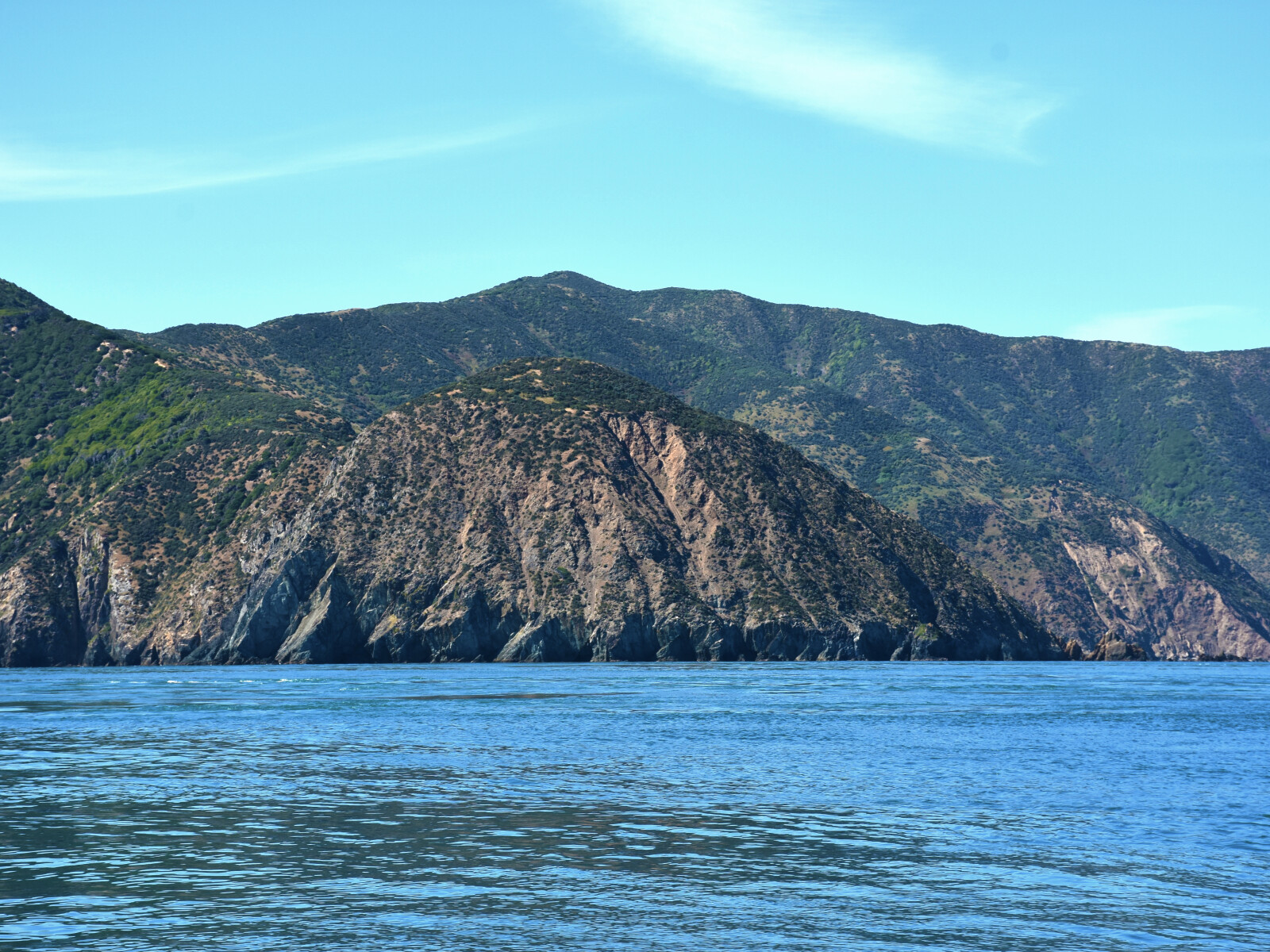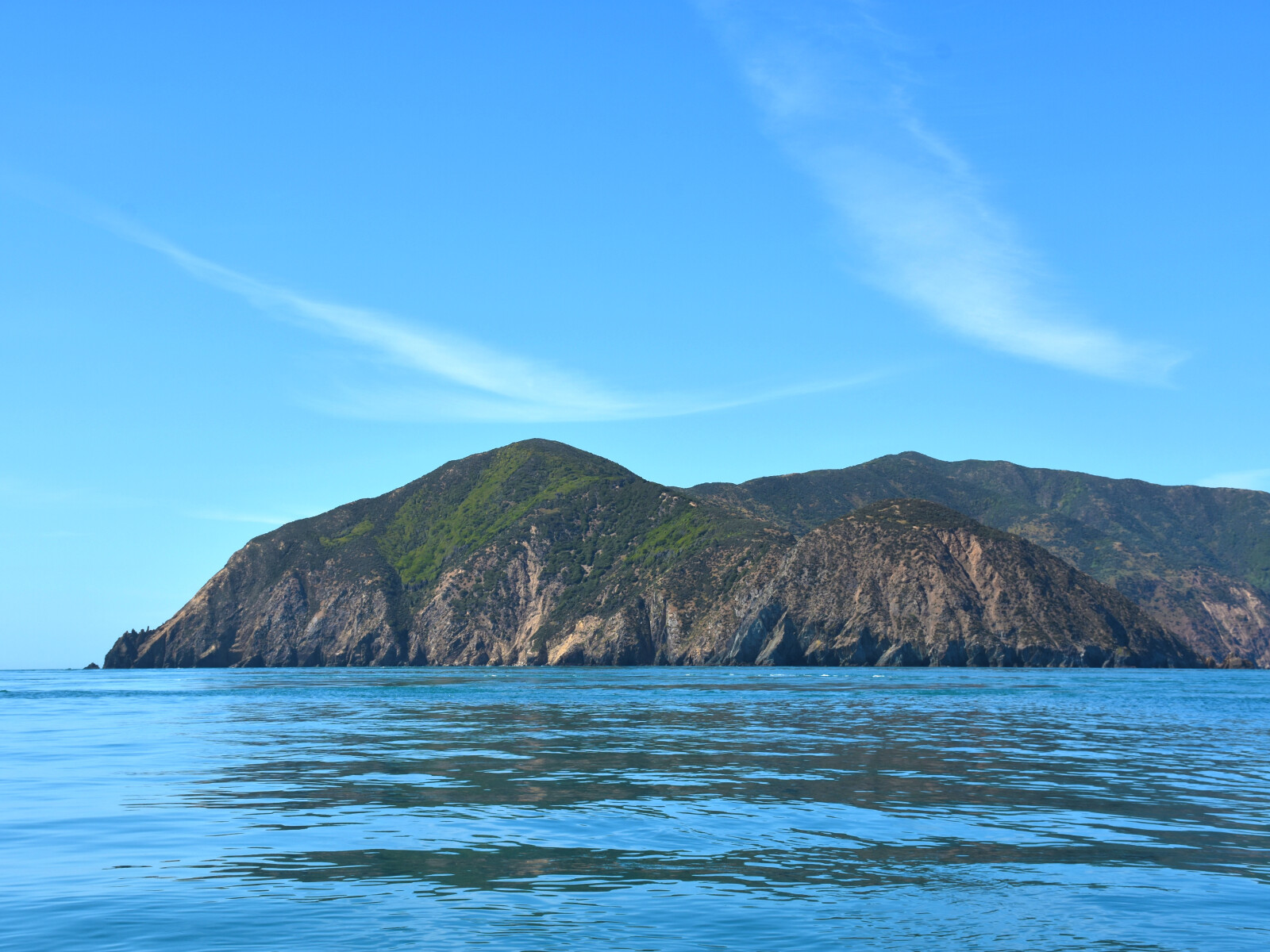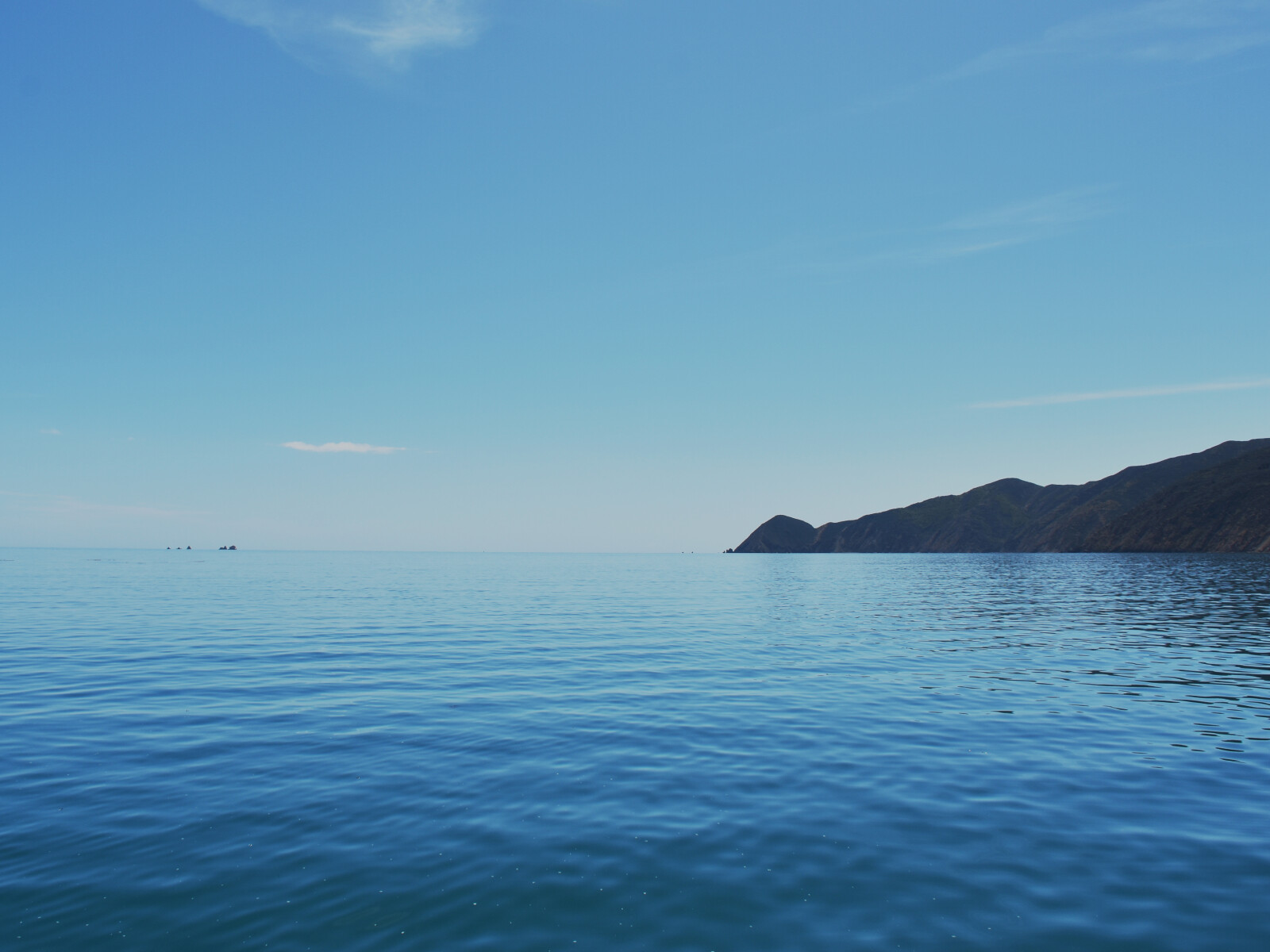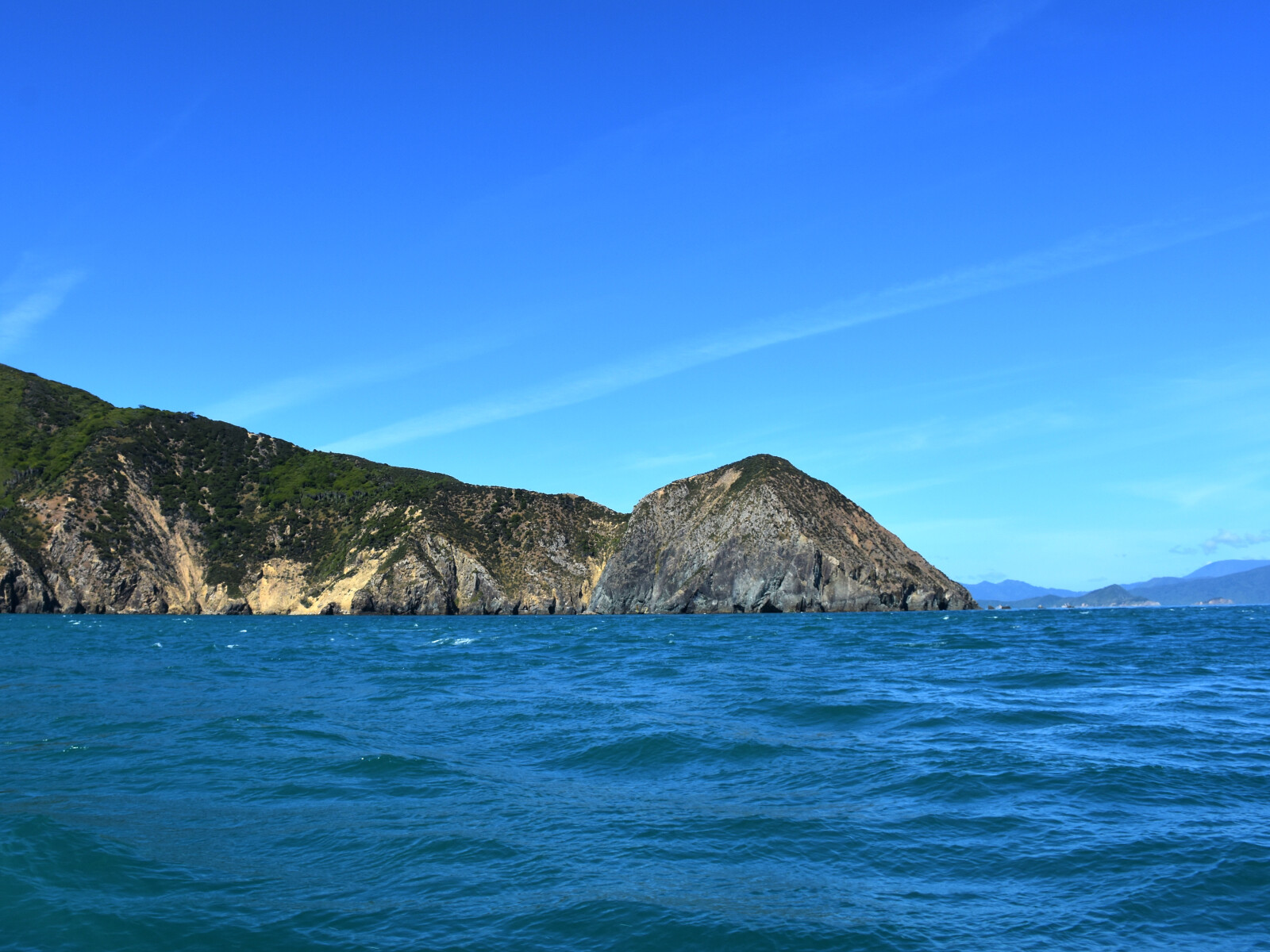This marks the eastern entrance to Queen Charlotte Sounds. From seaward it appears as a long extended arm with a clenched fist at the end. The Cape is fringed with rocks and extending 350 metres from the western point are Ngaturuturu Rocks.These are connected to the Cape and have outlying rocks up to 100 metres from them. The northern part of the Cape should also be given a clearance of 100 metres.
Stella Rock is half a mile due west from Cape Koamaru and can have a little under one and half metres of water over at LW. The rock is flat and about five metres in diameter and protrudes straight up from the seabed. This rock is a danger if any sea is running and waves can be seen to break as they pass over the rock.
Lining up the passage between The Twins with the south end of Long Island gives one transit but a second is not so easy to find. On a calm day it is an interesting exercise to locate the rock and observe your own clearing marks.
At night if The Brothers light is kept just visible on Cape Koamaru this will lead north, clear of Stella Rock and south, clear of White Rocks. When due south of White Rocks, steering straight for the light on Motuara Island will lead clear of the reef off Long Island. It is a difficult area to negotiate in bad visibility.
Strong tidal streams and rips occur north of Cape Koamaru and out to The Brothers. These can be particularly bad with incoming tides against NW to N winds. Close to the Cape’s northern coast the stream is always to the east and on fine days a definite tide line can be seen where the different tidal streams meet.
The anchorage shown behind Ngaturuturu Rocks, on the south-west side of Cape Koamaru, is satisfactory for winds up to 20 knots from NW to NE, provided there is no sea running.
White Rocks
These rocks are a wild life sanctuary and offer no landing places or shelter. The rocks are readily visible at night as the beam from The Brothers light illuminates them. There is a dangerous sunken rock to the south of the group as indicated in the sketch.








